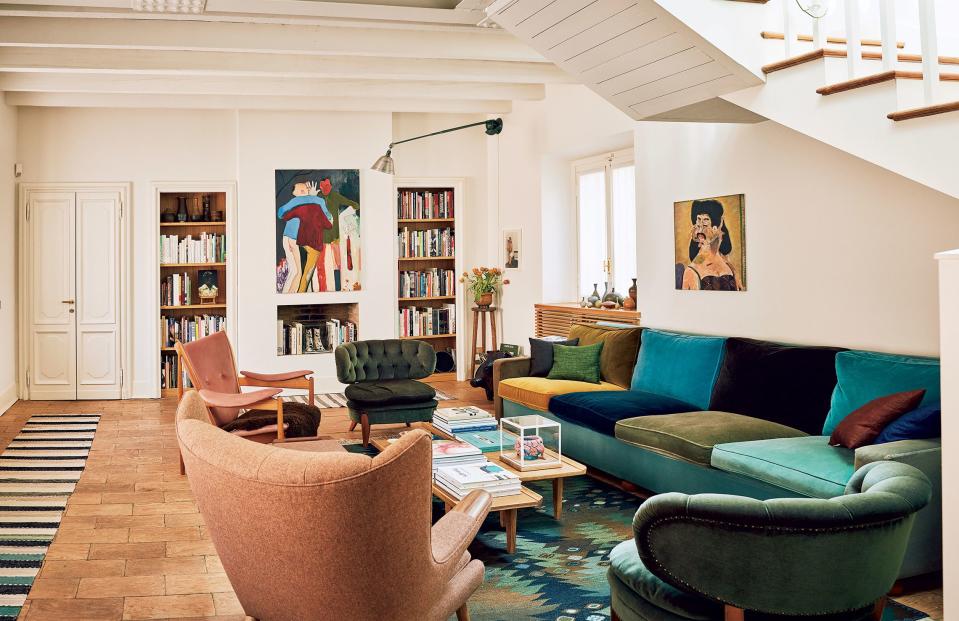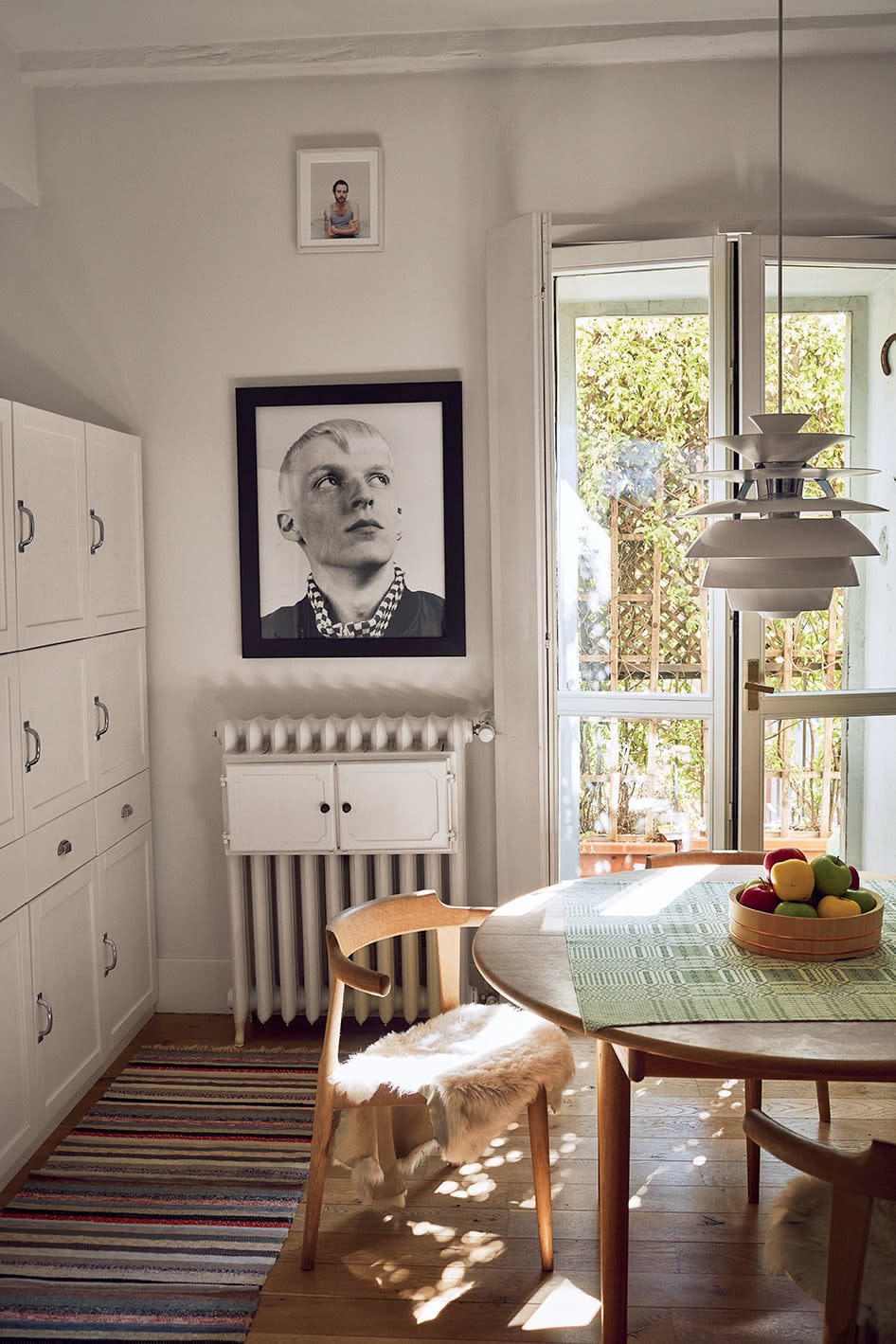Designer Marco Zanini on His Return to Fashion
After the vicissitudes of a quarter-century career in fashion working for such storied brands as Versace, Halston, Rochas, and Schiaparelli, Marco Zanini has finally decided to take “a gamble on myself,” as he puts it. The designer describes his new self-financed Zanini label as “a one-man show”—he controls every aspect of the brand, from developing his first business plan to sourcing each button, managing production and communication, and even photographing the campaign images.
“Designing the collection is 10 percent of the job!” Zanini explains over a delicious home-cooked dinner (Swedish meatballs with white cabbage and oranges) when I catch up with him in his light-flooded apartment under the eaves of a stately turn-of-the-century building in his native Milan. It was here that he photographed his look book and presented the debut fall 2019 Zanini collection to a hand-picked group of press and buyers. The pieces have the subtle flavor of well-loved vintage finds and focus on exquisite fabrics—a jet-beaded shift dress with a flapper feel, for instance; a wool greatcoat lined in Taroni’s washed gazar; a billowing duchesse satin dress faced in featherlight chiffon from Lyon’s Sfate et Combier; or pajama pants in a bark-textured Japanese kimono silk sourced on one of Zanini’s trips to the country he loves (and which he documented in a series of quirky photographs that provided much of the inspiration for the collection).
“I had two things in mind,” Zanini says. “A specific customer—a woman who is very at ease with herself, but who doesn’t want to show off—and specific buyers.” He invited buyers from 10 specialty stores from Tokyo to the Hamptons—with Dover Street Market, Ikram, and Tiina among them—and, gratifyingly, each of them placed orders (some of them, Zanini notes, even matching specific clients to individual pieces). “Seeing that they liked the collection assured me that if you have a clear idea in your mind and remain authentic, you can hit the target—even if the mission seems impossible at first! It’s very empowering.”

Zanini’s home reflects his subtle design aesthetic, with its honest midcentury wood furniture, a Svenskt Tenn sofa in a patchwork of cotton velvets, and carpets by the Swedish designer Märta Måås-Fjetterström that pay homage to childhood holidays spent playing in the country’s island archipelago. A jagged black laminate–and–glass coffee table designed by Robert Mapplethorpe in the early 1980s adds edge, and on the walls Zanini has hung Mapplethorpe’s photographs and artworks alongside contemporary images and pictures by artists including Wolfgang Tillmans, Sanya Kantarovsky, Mathew Weir, Roy Oxlade, and Paul P.
“It’s lovely to have some quality time with people,” Zanini says of his open-house presentation, “and to not have the pressure of digesting a humongous collection.” (After his decades in the industry, Zanini is keenly aware of the waste and surplus in much of the unsustainable fashion system, and his tightly edited offering is partially a response to that.) “The buyers love that, too,” he says, “because they are so used to drowning in showrooms with thousands of SKUs and samples—and I feel the fatigue of too many collections, too many runway shows, too many Instagram feeds—too much of everything. I think that people are looking for something that is not so overexposed.” Zanini discovered that he had to persuade the suppliers and manufacturers to accept his modest orders—“It was like flirting,” he jokes. “The first collection was like a blind date.”
With this in mind, Zanini decided not to embrace e-commerce for his debut, relishing instead the idea of growing “a loyal clientele season after season through word of mouth. I still believe that fashion gravitates around desire,” he says, “and there is nothing sexy with being overwhelmed by stuff all the time.”

Though Zanini admits that when one works for a global brand, “everything is easier because you can delegate,” he doesn’t regret “the insane, strangling, killer pressure. I’ve been part of a certain game of musical chairs,” he notes wryly, “and I’ve seen designers—myself and others—come and go and too quickly.”
Zanini, who has worked in New York and Paris, now relishes his life back in Milan, a city that represents for him “a certain kind of understatement, a discreet luxury—if you like the idea of what’s behind closed doors, Milan can tickle that fantasy. But although I like to think that Milan’s changed,” he adds, talking of the recent explosion of maverick young talent in all design fields, “I’ve always loved it. Even when it was gloomy, Milan was a city of giants,” he says, ticking off the iconic names of Italian fashion. “It was their kingdom—understandably so—but a new generation needs to emerge. We need to let our voice be heard. To raise your voice in your own way—even whispering—is already something.”
Originally Appeared on Vogue
